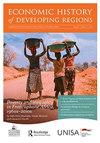Gender and settler labour markets: The marriage bar in colonial Zimbabwe
IF 0.8
Q1 HISTORY
引用次数: 1
Abstract
ABSTRACT This paper discusses the marriage bar in Southern Rhodesia’s labour market. It extends the analysis of the marriage bar. Over and above restrictions to enter the labour market, white women in colonial Zimbabwe, over time, also faced restrictions in terms of their conditions of service once they had entered the market. Married women, for example, were not permitted into permanent employment and, therefore, did not enjoy the benefits associated with fixed establishment. Married white women also had limited opportunities for promotion. Various justifications were proffered to maintain this status quo. However, by and large, hegemonic patriarchies played an important role in entrenching the domestic ideology that fuelled the marriage bar in its various forms. As the paper demonstrates, the marriage bar did not go unchallenged and, in 1971, married women’s restrictions regarding permanent employment were lifted. Of course, these legalistic undertakings were not always immediately reflected in practice partly because perceptions about married white women as primarily mothers and wives lingered on.性别和定居者劳动力市场:殖民地津巴布韦的婚姻障碍
摘要本文讨论了南罗得西亚劳动力市场中的婚姻门槛问题。它扩展了对婚姻门槛的分析。除了进入劳动力市场的限制外,长期以来,殖民地津巴布韦的白人妇女一旦进入劳动力市场,在服务条件方面也面临限制。例如,已婚妇女不被允许长期就业,因此不享受与固定机构相关的福利。已婚白人女性的晋升机会也很有限。人们提出了各种理由来维持这种现状。然而,总的来说,霸权父权制在巩固国内意识形态方面发挥了重要作用,这种意识形态以各种形式助长了婚姻禁令。正如该文件所表明的那样,婚姻门槛并非没有受到质疑,1971年,已婚妇女对永久就业的限制被取消。当然,这些法律承诺并不总是立即反映在实践中,部分原因是人们对已婚白人女性主要是母亲和妻子的看法挥之不去。
本文章由计算机程序翻译,如有差异,请以英文原文为准。
求助全文
约1分钟内获得全文
求助全文

 求助内容:
求助内容: 应助结果提醒方式:
应助结果提醒方式:


